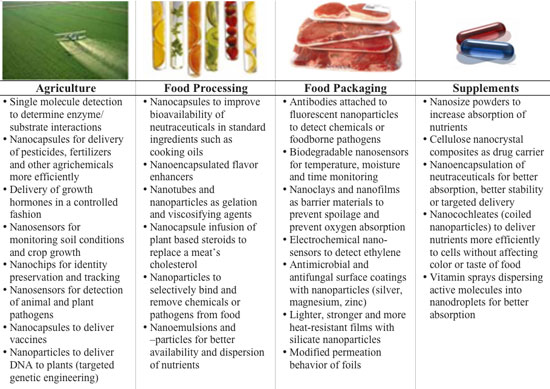New research shows we are at risk of being exposed to nanoparticles in food and through domestic products far more than we realize.
Take titanium dioxide (TiO2) for example. this is a widely used additive found in food, personal care and other household products. Each year around 7 million tons of bulk TiO 2is produced annually. Why is it so popular? Well it's usedo provide whiteness and opacity to products such as paints, coatings, plastics, papers, inks, foods, pills, as well as most toothpastes. In cosmetic and personal care products, it is used as a pigment, sunscreen and a thickener.
(Source: Nanowerk News)
Perhaps the most alarming news comes from Science Daily that reports "Children may be receiving the highest exposure to nanoparticles of titanium dioxide in candy, which they eat in amounts much larger than adults, according to a new study. Published in ACS' journal, Environmental Science & Technology, it provides the first broadly based information on amounts of the nanomaterial -- a source of concern with regard to its potential health and environmental effects -- in a wide range of consumer goods."
Friends of the Earth in a recent article "Out of the Laboratory and on to our plates" report that "untested nanotechnology is being used in more than 100 food products, food packaging and contact materials currently on the shelf, without warning or FDA testing"
And as far back as Janury 2010, A House of Lords press notice: "Science and Technology Committee - Nanotechnologies and Food" begins:
LORDS SCIENCE AND TECHNOLOGY COMMITTEE CRITICISES THE FOOD INDUSTRY FOR FAILING TO BE TRANSPARENT ABOUT ITS RESEARCH INTO THE USES OF NANOTECHNOLOGIES
The House of Lords Science and Technology Committee today criticises the food industry for failing to be transparent about its research into the uses of nanotechnologies and nanomaterials.
In their report, Nanotechnologies and Food, the Committee notes that transparency and honesty are key components for ensuring public trust in both food safety and scientific developments, and argue that the approach of food companies in not publishing or discussing details of its research in this area is unhelpful. The Committee acknowledges that the food industry is right to be concerned about negative public reactions to developments in nanotechnologies but asserts that appearing to be secretive about its research “is exactly the type of behaviour which may bring about the public reaction it is trying to avert.”
Finally from Nanowerk Spotlight, an excellent profile of some of the impact of nanotechnology in our everyday life




No comments:
Post a Comment